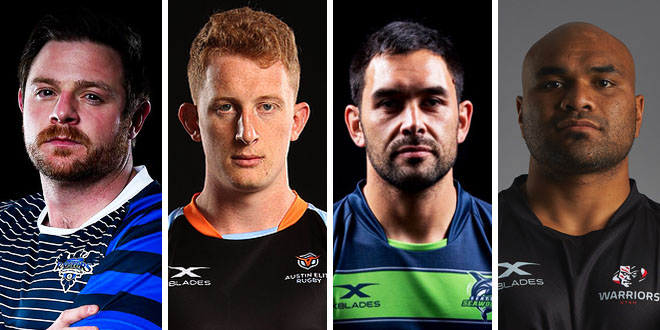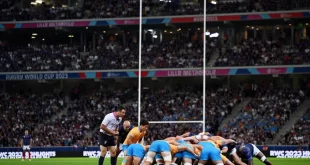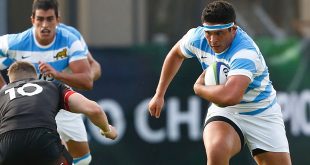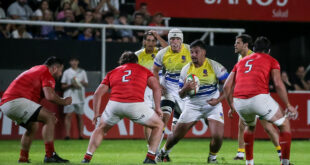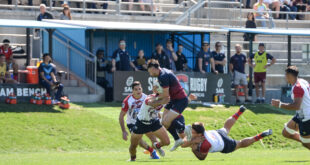The inaugural season of Major League Rugby is in the books and that means it’s time to select our Dream Team for 2018. We deliberately did not name weekly MLR selections this year with only two matches on a couple weeks, but that may well change in 2019 with the league set to expand by as many as three teams.
It’s important to note that this is not necessarily an ‘MLR XV’ in the sense that some top level players simply did not play a large enough part of the season to be considered. Our threshold for consideration was set at four games – half the regular season – but all of those named exceeded that.
As ever the primary criteria for selection was form. Players were rewarded for consistency throughout the season rather than one or two exceptional performances. We also felt it was important to pick players at the positions they actually appeared in with the sole exception of flanker where our choices simply could not be left out.
Only four teams are represented in the side. The finalists – Seattle and Glendale – have five each with Utah contributing three and Austin two. San Diego can be considered particularly unlucky but their success can largely be attributed to team cohesion rather than individual excellence, with injury and Eagles selections also ruling out several players who might otherwise have been in contention.
1 – Olive Kilifi (Seattle Seawolves) We received criticism for selecting him in our PRO Dream Team two years ago. Will we hear the same again? On that occasion Kilifi was chosen as a tighthead prop. This time it’s as the top loosehead in the competition. His contributions went beyond the scrum, he Kilifi’s form has seen him leap back into World Cup contention with the Eagles. Front row newcomers Alex Tucci and Sione Tu’ihalamaka impressed in the loose but need more time to learn the dark arts.
2 – Zach Fenoglio (Glendale Raptors) A certain finalist for Player of the Year. Ended the season with seven tries all told, a mark topped only by Utah finisher Tonata Lauti. Spent half his time playing on the blindside flank and didn’t look at all out of place. Fenoglio’s set piece is just as strong as his ability in the loose. Still short of his 30th birthday, he remains the best hooker in American rugby not playing in Europe. Will Gary Gold be tempted to lure Fenoglio out of his self-imposed Eagles exile for the World Cup?
3 – Tim Metcher (Seattle Seawolves) There were better players in the loose but the worth of a tighthead prop is almost entirely predicated on the set piece. In that respect Metcher had no equal. He smashed all challengers in the scrum and contributed enough around the fringes to be an easy choice. Angus MacLellan played more minutes than any other prop and is worthy of a mention. Paul Mullen impressed but didn’t have enough game time to warrant consideration.
4 – Ben Mitchell (Austin Elite) Very few if any on this side of the ocean would have been familiar with the towering Irishman before the season. Afterwards he is a unanimous selection on the left side of the engine room. The best lineout operator in the league – despite his phalangeal abnormality – and the best athlete among MLR’s second row divisions. Played every minute for Austin with the exception of two yellow cards. Utah’s Saia Uhila was outstanding throughout while both Nikola Bursic of New Orleans and Seattle’s Taylor Krumrei started every match and were consistent performers.
5 – Matt Jensen (Utah Warriors) While the technical appreciation of the two sides in the front row is generally appreciated by aficionados, less so is the second row where tighthead locks are under-appreciated animals. Finding good ones in the Americas is not an easy task. Houston brought Charlie Hewitt over from England, while Seattle had Canadian Cam Polson as a key piston in the scrum. Ben Landry’s reputation is well-earned but he was barely a factor for Glendale after suspension and Eagles selection restricted him to just two regular-season games. Jensen meanwhile was a standout both in the tight and loose in each of the seven games he started. A big man who can scrum on the right side and athletic enough to jump anywhere in the lineout is a rare find. Fought through bronchitis to make the bench in Utah’s final two matches.
6 – Hanco Germishuys (Austin Elite) Only played five games – the least of anyone in our team – but made such an impression that he simply had to be somewhere in our team. One of the most dominant carriers in the competition, it’s still not clear what his best position in the field is. With Austin he lined up mostly at openside but also a fair bit at No8, and while on Eagles duty he is most often seen on the blindside. We’ll have Germishuys where he sees fit. Any European scout who doesn’t have him on their shopping list should have their credentials revoked.
7 – Vili Toluta’u (Seattle Seawolves) Another who had to be in the team somewhere. Initially tapped to be a reserve hooker, he made such an impact in the opening match against San Diego from the bench that he stayed on the flank for the remainder of the season. His powerful physique suggests that he might be very effective in the front row. For now, however, Toluta’u is doing exceptionally well as a loose forward. His strength at the breakdown is his best attribute but he is also a fearsome ball carrier.
8 – Sam Figg (Glendale Raptors) There were a number of high-profile players wearing the No8 shirt across the league but none had the impact of the former Australia Sevens international. Coming into the season Figg was seen more as a flanker, but with no genuine contender in Glendale’s ranks it was at the back of the scrum that he played exclusively. Rangy and athletic, he was effective in the lineout and impressed most as a link player. His acceleration caught many flankers off-guard and his open-field tackle on Don Pati must go down as the hit of the season.
9 – Phil Mack (Seattle Seawolves) In the end this came down to two players, with the Championship Final sealing what might have been a lengthy debate. Shaun Davies was probably the best pure scrumhalf in the competition, a point few would argue. Mack, however, was Seattle’s most important everything. Coach, playmaker, and unyielding competitor. He made a few tactical mistakes along the way but made up for it with sheer force of will. Enjoyed some of his best rugby in a Seawolves jersey, a team tailor-made for his high-tempo attacking style.
10 – Will Magie (Glendale Raptors) No halfback combination had the measure of Glendale’s established pair. The service of Davies gave Magie the time to dictate field position, something he did better than any other flyhalf in the competition. His 78% goal kicking percentage was bettered by only three players with more than a dozen shots from the tee. Magie is more than just a kicker, however, he is also a fine passer of the ball that allows Glendale to play with two hard-running midfielders without sacrificing width. Sam Windsor was a key figure for a Houston team that was underwhelming overall.
11 – Tonata Lauti (Utah Warriors) Split his time between the two wing positions and fullback. With our other wing selection a specialist on the right, we’ll have Lauti on the left. With San Diego’s Mike Te’o out injured after the first game, only teammate Don Pati could compare to the electric footwork of Lauti. One-on-one situations were virtually hopeless for defenders faced with stopping him. Lauti’s nine tries were tops in the league, scoring in all but two games, and he created several others. At 29 years old the real question is where has he been hiding?
12 – Paul Lasike (Utah Warriors) It’s rare to see a big-name signing exceed expectations, but it’s hard not to make that assertion after the season that Lasike had. The inspirational leader of the Warriors had no equal when it came time to get over the gainline. He might not have thrown any 30 meter spin passes, but he showed he can offload and also features a tidy kicking game for a man who closer resembles a tighthead prop than a winger. Another who the European scouts should have their sights on. Whether he has any interest in leaving his adopted home is another matter.
13 – William Rasileka (Seattle Seawolves) Not a simple selection by any means, with San Diego’s Anthony Salaber very much in contention. Injury to JP du Plessis meant he had to switch to inside center for the second half of the season, however, a position that didn’t allow us to see him at his very best. Rasileka started every game for Seattle and, like Lasike, was a force to be reckoned with on the advantage line. It’s hard to recall him losing any collisions, either with ball in hand or in the tackle. Formed a very effective midfield combination with Shalom Suniula acting in a playmaker role.
14 – Harley Davidson (Glendale Raptors) Like his fellow wing selection he leaped out of the shadows and into the limelight with a terrific season that started in the warm-up games. Scored seven tries and had many more scorching runs. Where Lauti is the hot stepper, Davidson’s change of direction is more subtle but he does so without losing any speed which makes him very difficult to defend in any space. Defensively needs a little work but showed deceiving upper body strength and the ability to tackle in one-on-one situations.
15 – Maximo de Achaval (Glendale Raptors) Several players looked capable at fullback but there were three standouts, any of whom could conceivably be named to a select side. Twinkle-toed Don Pati was a deadly counter-attacker for Utah, while nobody played more minutes this season than silky Mat Turner of the Seawolves. Not far off was de Achaval, who missed only one game plus one spell in the bin. Otherwise he was a constant on the field for the Raptors, starting three games at flyhalf when Magie was on Eagles duty and doing remarkably well. The 33-year-old is the most well-rounded of the three with excellent footballing skills, deceiving pace, and sharp decision making.
 Americas Rugby News Rugby news from across the Americas!
Americas Rugby News Rugby news from across the Americas!
